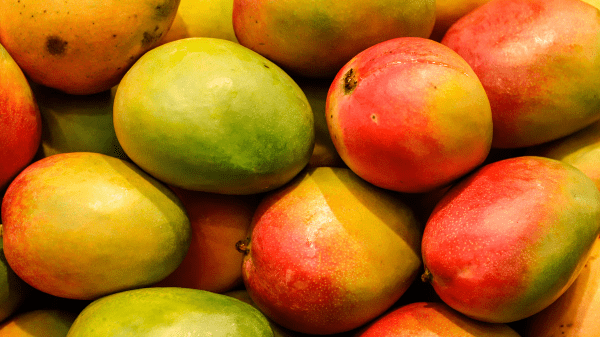From the beginning of the 2023-2024 campaign until the end of week 10, Peru exported 75,167 tons of fresh mango, which represented a drop of 66.9 percent compared to the 226,907 tons shipped in the same period of the previous campaign, as reported by Agraria, citing the president of the Peruvian Association of Mango Producers and Exporters (APEM), Carlos Iván Vílchez Peralta,
Vílchez Peralta explained that this drop in shipments is due to the low production generated by the climatic phenomena that affected the crop.

“The heavy rainfall in April and May 2023 due to Cyclone Yaku caused the land, especially the retentive ones, to have a lot of humidity, also affecting the infrastructure of irrigation canals, roads, unfavorable conditions for the farmer to work the field once,” he said. “Once the 2022-2023 campaign ended, that had an impact on the field, the land, and the plants.”
Added to this was the high temperatures recorded due to the presence of the Coastal Niño and Global Niño, which affected production in the 2023-2024 campaign. He explained that the temperatures recorded in July and August 2023 were higher than those recorded in those months of the last 50 years.
Vílchez Peralta pointed out that of the 75,167 tons shipped until week 10 of this campaign, more than 90 percent of fresh mango shipments belong to the Kent variety. They are followed by Ataulfo, Keitt, and Edward.
Despite the high participation of the Kent mango (it has the largest number of areas), this was the variety most affected by the high temperatures. In this regard, he said that for this variety to have good flowering it requires not having moisture in the soil, in addition the temperatures it needs are less than 19 degrees, however, between June and August 2023 there were temperatures higher than required, directly impacting to cultivation.
Regarding the destinations of fresh mango from Peru, he indicated that in the case of shipments by sea (which amounted to 62,000 tons), the main market was the U.S., which concentrated 38 percent of the total exported by this route.
It was followed by the Netherlands with 35 percent of the total, Germany with 7 percent, England with 6.7 percent, Canada with 3.89 percent, South Korea with 2.43 percent, Switzerland with 2.35 percent, Belgium with 2.26 percent, Spain with 1.54 percent, others with 1.16 percent.
In the case of air shipments (11 thousand tons were shipped this way), the markets of Spain stand out, which participated with 40 percent of the total; Holland with 17 percent; France with 14 percent; South Korea with 13 percent. While 1.7 tons were shipped by land, their destination being Chile.
The president of APEM highlighted that, although the numbers of mango exports in the current campaign are worrying, the social issue is more critical, since there have been fields and industrial plants that did not open for business.
“In the 2023/2024 campaign, 70 percent of the population that works in mango cultivation did not have work because we have had 70 percent less fruit. There have been plants that did not open work, the fields have needed fewer collaborators, the harvest has been very low in this campaign, which is why less personnel was required,” he stated.
He explained that in Peru there are 35,000 hectares of mango, of which 90 percent correspond to properties smaller than 5 hectares; Furthermore, 75 percent of the areas correspond to properties smaller than 2 hectares, so we are talking about an average of 9,000 farmers. In Piura alone there are 30,000 hectares of this fruit.
He pointed out that to care for 1 hectare of mango in a year with normal production requires 3 people, so to care for 35,000 hectares requires 105,000 people (105 thousand families). However, the impact that this lower flowering (and lower production) has generated is that in the current campaign those 3 people per hectare have no longer been required but only 1, so of the 105,000 people normally needed now only 35,000 were required, while the rest (70,000 people, which represents about 70 percent) were left unemployed.
“These 70,000 families have a home, each home is made up of 3 people, so there are approximately 210,000 people directly affected, be careful, we are only talking in the countryside, to this we must add the lower availability of jobs in industrial plants , where many have not opened and many have only worked 20 percent, so the impact would also be on the order of 70 percent less,” he concluded.



